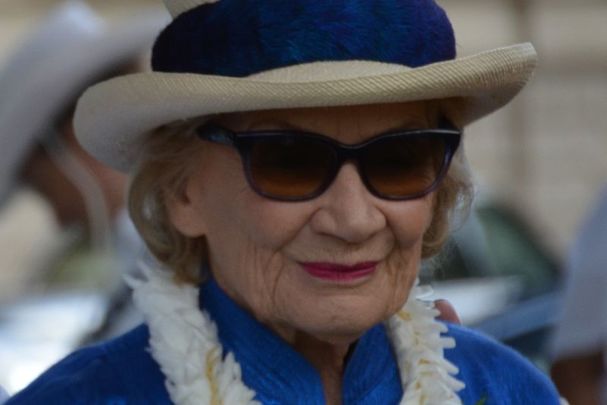Abigail Kinoiki Kekaulike Kawānanakoa, the so-called last Hawaiian princess whose lineage included the Hawaiian royal family and an Irish businessman who became one of Hawaii’s largest landowners, died on Sunday, December 11 at the age of 96.
Kawānanakoa’s great-grandfather James Campbell, who was born in Derry, was a businessman who made his fortune as a sugar plantation owner and one of Hawaii’s largest landowners, the Associated Press reports.
Campbell left Ireland at the age of 13 on a ship bound for Canada and later joined his brother John in New York City.
In 1850 - after surviving a shipwreck in the South Pacific, being held prisoner, escaping, and settling in Tahiti for several years - Campbell boarded a whaling ship that docked in the port of Lahaina on the Hawaiian island of Maui. There, Campbell married Hannah Barla, who died in 1858.
In 1860, the Derry native established the Pioneer Mill Company, a sugar-processing plant that went on to produce sugar until 1999, with his entrepreneur partners Henry Turton and James Dunbar. Dunbar sold out of the business early on. The partners also bought the Lahaina Sugar Company when it went bankrupt in 1863.
With the boom in the sugar industry in the Kingdom of Hawaiʻi and high international demand, Campbell became one of the wealthiest people in Lahaina. He used his profits to purchase land on the islands of Oʻahu, Maui, and the Big Island of Hawaiʻi.
In 1877, Campbell sold his interest in the Pioneer Mill for half a million dollars to Turton.
That same year, Campbell married Abigail Kuaihelani Maipinepine Bright. In 1902, their daughter, Abigail Wahiika‘ahu‘ula Campbell, married Prince David Kawānanakoa, who was named an heir to the throne.
Abigail and Prince David's daughter Lydia Liliuokalani Kawānanakoa married Irish American William Jeremiah Ellerbrock in 1925 in Honolulu. On April 23, 1926, the two welcomed what would be their only child, Abigail Kinoiki Kekaulike Kawānanakoa, before divorcing in 1927.
In his book "Who Owns the Crown Lands of Hawai‘i?" author Jon M. Van Dyke wrote that young Abigail was "adopted as a hānai child by her [maternal] grandmother Abigail Wahiika‘ahu‘ula Campbell Kawānanakoa in order to recognize her priority to royal heir (and heiress of the Campbell estate)."
Known to family and close friends as “Kekau,” Kawānanakoa received more Campbell money than anyone else and amassed a trust valued at about $215 million, according to the Associated Press.
Kawānanakoa's title of 'princess' was more honorific than official.
“She was always called princess among Hawaiians because Hawaiians have acknowledged that lineage,” Kimo Alama Keaulana, assistant professor of Hawaiian language and studies at Honolulu Community College, said in a 2018 interview.
“Hawaiians hold dear to genealogy. And so genealogically speaking, she is of high royal blood.”
In 2021, Kawānanakoa acknowledged in an interview with Honolulu Magazine that had the monarchy survived in Hawaii, her cousin Edward Kawānanakoa would be in line to be the ruler, not her.
“Of course, I would be the power behind the throne, there’s no question about that,” she joked.
Governor of Hawaii Josh Green, who ordered the state’s flags to be flown at half-mast through December 18, said on December 12: “Abigail bore the weight of her position with dignity and humility, enriched the lives of everyone she touched, and like so many Aliʻi who came before her, she has left a legacy dedicated to her people in perpetuity.
“Hawaiʻi mourns this great loss, and our aloha and heartfelt condolences go out to her entire ʻohana and all who had the privilege of knowing Princess Abigail Kawānanakoa.”
The Governor’s office noted that Kawānanakoa was a passionate advocate for Native Hawaiian causes, believing that her wealth was to be used to help preserve the Native Hawaiian culture and people.
Kawānanakoa died at home with her wife, Veronica Gail Worth, at her bedside.
“Abigail will be remembered for her love of Hawai‘i and its people,” Worth said in a statement, “and I will miss her with all of my heart.”




Comments